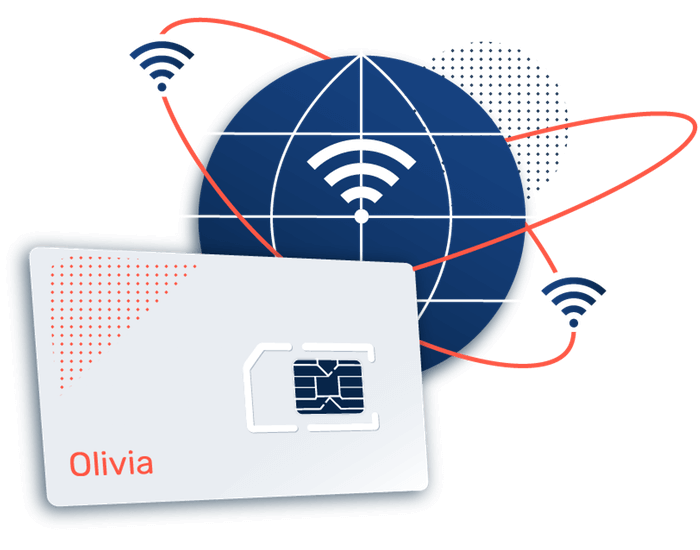Managed IoT Connectivity Platform Enabling Internet of Things Connectivity
Managed IoT Connectivity Platform Enabling Internet of Things Connectivity
Blog Article
Aws IoT Connectivity Ultimate Guide to Cellular IoT Networks
As the demand for the Internet of Things (IoT) continues to develop, so does the need to perceive the various connectivity choices out there. Two major categories of connectivity usually under dialogue are cellular and non-cellular IoT connectivity. Each has its own strengths and weaknesses, and the selection between them can significantly influence the efficiency and efficiency of IoT functions.
Cellular IoT connectivity leverages established cellular networks to facilitate communication between devices. This sort of connectivity usually features several subcategories, including 2G, 3G, 4G, and now 5G technologies. Cellular networks supply widespread protection, making them suitable for purposes that require mobility and prolonged range. The in depth infrastructure already in place permits for rapid deployment, saving time and assets.
Cellular Connectivity Providers For IoT What Does IoT Connectivity Look Like?
Moreover, cellular connectivity usually comes with robust security measures. The use of encryption and authenticated entry provides a layer of protection that is crucial for so much of functions, especially in sectors dealing with sensitive data like healthcare and finance. This ensures that data transmitted between devices and networks is secure from potential cyber threats.
On the other hand, non-cellular IoT connectivity encompasses a variety of different technologies, together with Wi-Fi, LoRaWAN, Zigbee, and Bluetooth. These choices can range considerably by way of range, knowledge rates, and power consumption. Non-cellular solutions typically give consideration to particular environments, similar to residence automation or industrial settings, the place localized communication is extra sensible.

Non-cellular connectivity solutions are usually less expensive in environments where extensive cellular protection may not be necessary. They can additionally be simpler to implement in smart buildings or localized networks. For instance, Wi-Fi supplies high information rates and helps an unlimited number of gadgets but is proscribed by range and protection.
IoT Connectivity Companies Ultimate Guide to IoT Connectivity
LoRaWAN, another in style non-cellular technology, is designed specifically for long-range communication whereas consuming minimal power. This makes it best for functions requiring low data rates over prolonged distances, corresponding to agricultural sensors or smart city infrastructure. The trade-off comes in its decrease data price compared to cellular solutions, which may not be suitable for applications requiring real-time data transmission.
In distinction, cellular networks excel in applications that demand constant connectivity over longer distances, like logistics and fleet management. The capacity to maintain a connection on the move is important for functions that involve tracking automobiles or belongings throughout extensive geographical areas. Additionally, roaming capabilities between different cellular networks enhance connectivity for cellular purposes.
IoT Connectivity Policy Connectivity Standards Alliance for IoT
Another issue to consider is the maturity of the technology. Cellular networks have been around for decades, benefiting from continuous developments. Meanwhile, non-cellular technologies are comparatively newer and will not have the identical stage of reliability and robustness as cellular techniques. Many organizations could discover consolation and assurance within the tried-and-true nature of cellular connectivity, particularly for crucial purposes.
However, as IoT continues to evolve, so do non-cellular technologies. Ongoing developments in wireless standards are significantly enhancing the capabilities and performance of non-cellular options. With developments in Low Power Wide Area Network (LPWAN) technologies, there's rising curiosity amongst developers and businesses looking to deploy IoT gadgets that require much less energy and wider protection at a lower cost. Aws IoT Connectivity.
Web Connectivity In IoT Quick Guide to IoT Connectivity

The landscape of IoT connectivity is ever-changing, which makes the decision between cellular and non-cellular connectivity highly context-dependent. Various factors, including the specific application necessities, protection wants, value constraints, and safety concerns, strongly affect this choice. The right connectivity option can improve operational effectivity, enhance knowledge collection, and provide timely insights for decision-making.
When read the article evaluating which option suits finest, it is essential to assess not only the instant needs but additionally the longer term development potential of the appliance. In some instances, hybrid solutions that leverage both cellular and non-cellular connectivity may present the most effective of each worlds. For instance, an application may make the most of cellular connectivity for broader knowledge transmission and non-cellular options for localized, low-power communications.
IoT Connectivity Market Providers of Cellular IoT Connectivity
The rise of 5G expertise additional complicates the landscape but additionally offers alternatives for both cellular and non-cellular choices. With its potential for ultra-low latency and excessive information rates, 5G might enhance the viability of cellular IoT for purposes that previously relied on non-cellular options. Yet, non-cellular technologies continue to enhance, carving out niches that cellular networks might not optimally serve.
In closing, cellular vs. non-cellular IoT connectivity presents a fancy selection with far-reaching implications. Each connectivity kind brings unique advantages and limitations that cater to varying software needs. As IoT know-how advances and matures, the last word decision hinges on particular project requirements, use instances, and future scalability considerations. Understanding the nuances of every option can provide the mandatory insight to make an knowledgeable decision, paving the way for successful IoT deployments (IoT Connectivity Solutions).
- Cellular IoT connectivity uses established cellular networks, offering broad protection and dependable indicators in city and rural areas.
- Non-cellular IoT connectivity, corresponding to LPWAN (Low Power Wide Area Network), is particularly designed for low-bandwidth functions, prioritizing energy effectivity over pace.
- In cellular networks, information switch charges could be greater, supporting functions that require real-time information transmission, corresponding to video surveillance or autonomous autos.
- Non-cellular options typically have longer battery life, making them best for units requiring minimal maintenance, like environmental sensors and smart meters.
- Cellular IoT sometimes includes greater operational costs due to subscription fees and information plans, whereas non-cellular choices may be cheaper for big deployments.
- Security protocols in cellular networks are strong, benefiting from the infrastructure of established telecommunication suppliers.
- Non-cellular technologies can employ simpler and more localized safety measures, doubtlessly resulting in vulnerabilities in certain implementations.
- Scalability is generally easier with cellular networks, which might assist an enormous number of devices concurrently without important degradation in efficiency.
- Non-cellular IoT might offer larger flexibility in community design, allowing businesses to tailor options particularly to their operational needs without reliance on a cell copyright.
- Depending on the appliance, hybrid models integrating each cellular and non-cellular connectivity can optimize total performance and cost-efficiency.undefinedWhat is the difference between cellular and non-cellular IoT connectivity?undefinedCellular IoT connectivity makes use of cellular networks (like 4G or 5G) for data transmission, whereas non-cellular choices embrace technologies like Wi-Fi, BLE (Bluetooth Low Energy), and LoRaWAN, which function independently of cellular copyright networks.
When is it finest to make use of cellular IoT connectivity?undefinedCellular connectivity is right for functions requiring wide protection, mobility, and real-time knowledge transmission, such as vehicle monitoring or smart wearables, where reliability and speed are crucial.
Aws IoT Connectivity Knowledge Zone for IoT Connectivity
What are the benefits of non-cellular IoT connectivity?undefinedNon-cellular choices are often less expensive for applications with decrease data transmission needs, corresponding to smart house gadgets or environmental sensors, and they can make the most of existing infrastructure like Wi-Fi networks.

How do costs evaluate between cellular and non-cellular IoT connectivity?undefinedCellular options usually contain ongoing subscription charges for community entry, while non-cellular technologies typically incur lower initial iot connectivity costs and fewer recurring bills, making them economical for sure use circumstances.
Can I change from non-cellular to cellular IoT connectivity later?undefinedYes, many units are designed with flexibility in mind, allowing for upgrades or modifications from non-cellular to cellular connectivity if future needs dictate a need for broader protection or greater reliability.
What type of gadgets are finest suited to cellular IoT connectivity?undefinedDevices that require fixed connectivity, similar to fleet management systems, remote monitoring instruments, and telehealth purposes, typically benefit most from cellular networks as a result of their intensive protection and help for mobility.
IoT Connectivity Solutions Evaluating IoT Connectivity Technology Pros and Cons
Are there limitations to utilizing non-cellular IoT connectivity?undefinedYes, non-cellular connectivity can face limitations like range (for technologies like BLE), reliance on local networks (Wi-Fi), and fewer capacity to support mobile functions, making them less best for sure situations that demand reliability.
What security concerns should I remember for either connectivity type?undefinedCellular networks generally present built-in security measures, however non-cellular solutions may be more prone to local threats. IoT Connectivity. Always use encryption and secure authentication strategies to mitigate dangers across both kinds of connectivity.
How does latency examine between cellular and non-cellular IoT connectivity?undefinedCellular networks usually have decrease latency, making them suitable for real-time applications, while non-cellular options would possibly expertise higher latency, especially with larger networks or crowding, which can influence performance.
Report this page